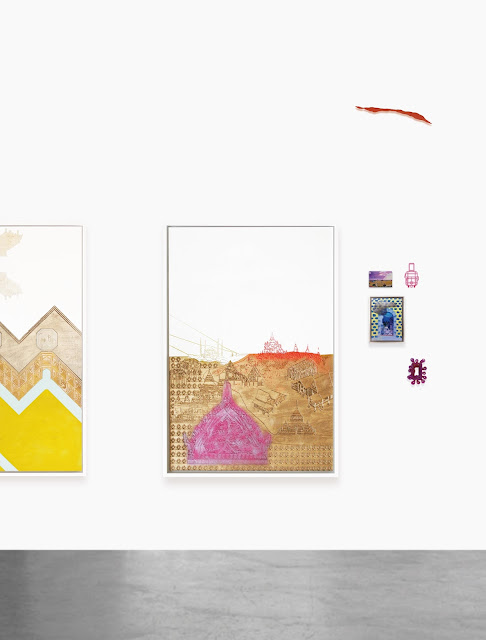The word, ‘world’ immediately brings up complex associations.
Infinitely many elements, which are interconnected yet mutually
dependent, produce and determine a hypercomplex system.
When one thinks of the problems of our time, our thoughts twist
into a Gordian knot, and the strands are so intricately intertwined
that it seems impossible to link causes and effects. We are left
with no clear answers, only loose ends.
Globalisation - Justice - Competition - Consumption - Identity - Resources - Digitisation - Sustainability.
Each of these tags is related to the modern constitution of the world.
If you try to systematize these concepts, one quickly reaches a limitation:
for example, how are the areas of sustainability and resources connected?
Can we use natural resources sustainably? What resources have been
exhausted in the foreseeable future? What environments have been
irreparably damaged by resource extraction? Which countries can
afford to protect their natural resources? At what price? These questions
necessarily lead to questions about the consumer. What do we choose
to consume, and how much? Do we consume sustainably produced
goods? Why? Why not? Are consumption and the logic of the
commodity inseparable? How does consumer behaviour differ
between societies? Are subsistence and consumption equivalent?
In what proportion do different demographics consume goods? What
does our consumer behaviour say about us? As you can see,
consumption gradually merges with the issue of identity, and raises
new questions. How strongly do we connect identity with consumption?
What status symbols are central to our self-expression? What physical
indicators do we use to categorize our fellow human beings? What does
it mean for society if status symbols play an important role in fashioning
our social status? What does this mean for economically
homogeneous societies? Economically diverse societies? How does
global networking lead to the emergence of new identities, new
consumer expectations, new beauty needs? Who dominates the
global discourse on identity, consumerism, beauty, ‘the good life’?
Who fits in the grid of social and global subject requirements?
We consume expensive status symbols—under what social
conditions and with what resources are the produced? These questions
spiral progressively deeper and expand into contexts of global
injustice, competition logic, economic and ecological crises, digital
networking, hegemonic status, and identity discourses.
The interplay of these topics clearly shows that it is impossible, in the
modern world, to think of these questions in isolation. One question only
leads to the next. The individual elements form a system; they are the
parts that structure a hypercomplex entity. When one analyzes a single
piece of the system, it behaves differently because it is in a different
context. If a part is added or removed, the system’s dynamic is changed.
Michael Stoll is concerned with precisely this Gordian knot of unanswered
questions. The complex entanglement of elements that structure the
complexity of the world is to be found reflected in his individual work and
oeuvre. Both in the series Naturally and in the series Bitmaps Stoll plays
with the viewer’s proximity to the image. By changing the distance
between viewer and image details disappear and structures are revealed
that were previously hidden. In this series of structural images Stoll
combines analog with digital and experiments with the removal and
addition of elements and the impact of these changes on the total system.
Outside of these series, Stoll pushes the game between closeness and
distance, and elements and systems, further. In the book arbeiten. Michael
Stoll 2002 - 2014 he examines the interaction between subject areas,
moving beyond chronology and series. Which images come forth and are
dominant? Which disappear in the background? How will changing distances
or including the neighbourhood of an image effect its interpretation? What
new questions arise at the macro level? What new structures, networks,
and dynamics are generated by non-chronological, unthematic arrangements?
In following with this statement, Stoll is concerned with taking a broad thematic
spectrum of the modern world, from microstructural issues of identity to
macrostructural questions about justice and global production processes. At
the same time he raises questions of a more technical, conceptual nature
when searching and defining elements in isolation, then returning them to
their context. In such a way, he introduces the viewer to his search for
the structure that underlies the apparent chaos of the world.
Text: Leonie Lydorf
Translation: Sophia Erdahl


